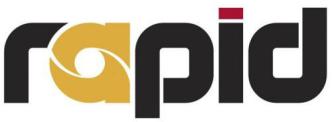Bringing drill bit re-sharpening to the rock face
The most important factor contributing to premature drill bit failure and poor drilling performance is ‘overdrilling’ or operating beyond the reconditioning point. Failure to regrind in time can prove costly.
Regular checks are important to maintain maximum penetration rates and to avoid overheating the bit, as this can destroy its metallurgical properties. Re-profiling the carbide button and removing excess steel is important in order to optimize drill bit service life, enhance the performance of the entire drilling operation and keep down the drilling and grinding costs.
The gauge or peripheral buttons suffer the most wear because these rotate at a faster speed and cut more rock than the centre buttons. Worn peripheral buttons and the loss of gauge steel on the drill bit head can lead to jamming, reduction in drill speed and premature button breakage.
Rotating the bit faster than necessary will not generally increase penetration speed but will increase the wear rate, particularly in abrasive rock. In such conditions it is advisable to monitor the rate of wear over a measured depth drilled to determine the frequency of re-grinding necessary. It is recommended that flat widths should generally not exceed 25% of the button diameter, although this varies from manufacturer to manufacturer.
Face buttons that are flat generally indicate a lack of hammer blow energy or insufficient thrust.
On inspecting the drill bit, if it displays any sign of minute thermal cracking of the carbide buttons (resembling alligator skin or very fine surface skin cracks), caused by overheating of the buttons, this condition should be rectified as soon as possible. If the condition is not remedied the cracks can cause small surface spalls and eventually lead to complete button failure. Alligator skin can occur in certain rock conditions long before excessive flat widths appear and can be remedied by lightly grinding the affected area.
Broken inserts are generally caused by: overdrilling the drill bit before reconditioning; reaming the hole; using excessive force; or where there are existing tungsten carbide or other metal particles in the hole.
A down-the-hole button bit can continue to drill with one or more broken buttons, but at a reduced penetration rate. Broken buttons should be ground off to prevent additional button particles breaking off and damaging other buttons.
New tungsten carbide inserts work in compression. As the carbide wears, however, flat spots appear leading to a horizontal or ‘shear’ load on the button.
Bearing all this in mind, Totnes-based Bridge Abrasives Ltd, manufacturers of diamond and CBN products, recommend regular regrinding and a service routine for button bits. They suggest drillers look out for any of the following signs that indicate that the bit needs servicing:
- increasing hole deviation
- significant decrease in penetration rate
- button breakages start to occur
- before the ‘flats’ worn on the buttons exceed one third of the diameter of the button
- when the development of ‘alligator skin’ type patterns appear on the surface of the buttons.
The Bridge Air 2000 re-grinding system consists of: a lightweight hand-held pneumatic grinder; portable air-preparation unit with in-line oiler; air regulator (0–20 bar); water sump and water/air hoses. All this is enclosed in a robust portable container and used together with diamond grinding cups (7–20mm diameter) to re-profile worn tungsten carbide buttons on down-the-hole hammers, and to remove the steel matrix from around the button, allowing the drill bit to be used repeatedly.
As a portable unit, the system can be used in the workshop or at the rock face where drilling is taking place, or be moved between the two as required. The water cooling /flushing is provided by a special automatic water sump device, which allows the grinder to ‘suck’ up the water rather than requiring a pressurized water supply, making the system easier to use.
One of the many problems faced when re-grinding is the operator exerting too much pressure on the grinder itself. The Bridge air grinder is designed with this in mind. Weighing 2.8kg, it is the ideal weight to re-profile the button without causing too much wear on the diamond cup and stopping the flow of water coolant/ flushing. The best results are achieved by rotating the grinder in a cylindrical manner to provide a good finished shape.
The pneumatic grinder runs at 19,000 rev/min (8 bar) and is designed for ease of use and maintenance with corrosion-free parts, self-lubricating bearings, a drop-in cartridge air motor, lightweight trigger action, and quick-change collet for fast and efficient operation.
Bridge Abrasives manufacture a full range of grinding cups including the Scandia grinding cup for hemispherical buttons, the Ballistic for ballistic buttons, and the Conical for conical shapes. Semi-ballistic and Parabolic cups can also be manufactured to customers’ requirements.
To remove the steel matrix the correct grinding cup (Boroscan) must be kept in direct line with the button axis at all times. If the tool is rocked from side to side the button and/or grinding cup can be damaged.
This is known as the ‘two-step’ method, but there is also a ‘one-step’ method available that uses a combination grinding cup to re-profile the carbide button and the steel matrix simultaneously. These cups are known as Combo for hemispherical and Ballistic Combo for ballistic-shaped buttons.
Bridge Abrasives Ltd, Unit E, Ford Road, Totnes Industrial Estate, Totnes, Devon TQ9 5LQ; tel: (01803) 866667; fax: (01803) 866001.



